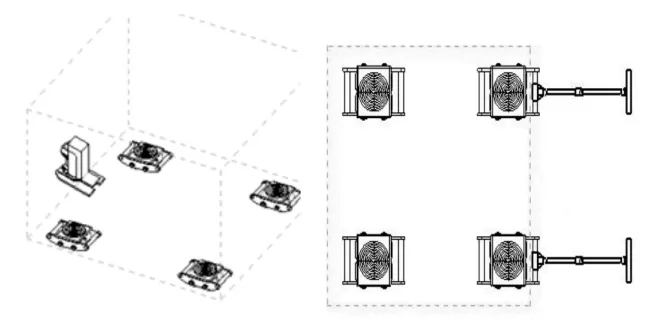Rail-Installed Crane Systems for Efficient Material Handling and Transportation Solutions
The Evolution and Significance of Rail Mounted Cranes
Rail mounted cranes, an integral component of modern industrial operations, have garnered significant attention due to their versatility, efficiency, and reliability. These cranes are specifically designed for heavy lifting tasks in various settings, including ports, rail yards, and construction sites. This article delves into the evolution, functionality, and significance of rail mounted cranes in contemporary industry.
Historical Development
The concept of cranes dates back to ancient civilizations, where rudimentary lifting devices were powered by manpower or simple mechanical systems. However, the first rail mounted cranes emerged in the early 20th century, gradually evolving alongside advancements in engineering and materials science. The integration of electric power significantly enhanced their lifting capabilities, leading to their widespread adoption in industrial applications. Over the decades, technological innovations, including the use of sophisticated control systems and stronger materials, have further expanded the possibilities for rail mounted cranes.
Design and Functionality
Rail mounted cranes are characterized by their placement on a fixed track. This design allows them to traverse significant distances horizontally while maintaining high stability and precision during lifting operations. Typically, these cranes consist of a robust gantry structure, hoisting mechanisms, and various attachments to accommodate different load types. They operate using a system of pulleys and chain drives, which can be controlled either manually or through automated systems.
One of the primary advantages of rail mounted cranes is their ability to handle heavy loads with ease, often lifting several tons at a time. This makes them ideal for handling shipping containers in ports or moving heavy materials in construction settings. Additionally, their design allows for multi-directional movement, enhancing operational efficiency.
Applications in Industry
rail mounted crane

Rail mounted cranes are utilized across various industries, each benefitting from their unique capabilities. In ports, these cranes are crucial for loading and unloading container ships. Their ability to swiftly handle multiple containers simultaneously accelerates the turnaround time for vessels, ensuring that goods are moved efficiently through supply chains. In manufacturing and construction, rail mounted cranes facilitate the movement of heavy machinery, precast concrete components, and steel structures, thereby streamlining workflow and reducing manual handling risks.
Furthermore, these cranes are increasingly becoming automated, with the integration of advanced sensors and control systems. This not only reduces the potential for human error but also optimizes performance in high-demand environments. Automated rail mounted cranes can operate continuously, significantly improving productivity and safety standards within facilities.
Economic Impact
The economic implications of rail mounted cranes are substantial. By enhancing productivity, these cranes enable industries to reduce operational costs and improve profitability. Their efficiency directly translates to lower labor costs and minimizes equipment downtime, which is critical in maintaining competitiveness in today's fast-paced market. Moreover, the proliferation of automated cranes positions businesses to further capitalize on technological advancements, driving innovation within the industry.
Future Trends
Looking ahead, the future of rail mounted cranes appears promising, fueled by ongoing technological advancements. The push towards green technologies will likely influence design considerations, leading to cranes that are not only more efficient but also environmentally friendly. Innovations in electric and hybrid power systems, along with enhanced materials for durability, will redefine operational standards.
Moreover, the integration of artificial intelligence and machine learning can improve safety and predictive maintenance, ensuring that these cranes operate at optimal performance. As industries continue to evolve, the role of rail mounted cranes will undoubtedly remain pivotal, adapting to meet the demands of modern logistics and construction.
In conclusion, rail mounted cranes represent a vital link in the chain of industrial operations, combining advanced engineering with practical applications to revolutionize how industries manage heavy lifting tasks. Their historical evolution and continued innovation underscore their significance in today's economy, promising a future where efficiency and safety coexist harmoniously.
-
Unlock Seamless Relocation with Our Heavy Equipment Moving ExpertiseNewsJun.06,2025
-
Unleash Unrivaled Flexibility with Our Adjustable Gantry CraneNewsJun.06,2025
-
Unleash Heavy-Duty Efficiency with Our Industrial Gantry Crane SolutionsNewsJun.06,2025
-
Revolutionize Steel Handling with Our Magnetic Lifter RangeNewsJun.06,2025
-
Master Equipment Mobility with Premium Machinery Mover SolutionsNewsJun.06,2025
-
Elevate Your Material Handling with Magnetic Lifter TechnologyNewsJun.06,2025
-
YS Permanent Lifting Magnets: The Smarter Way to Handle SteelNewsMay.22,2025
